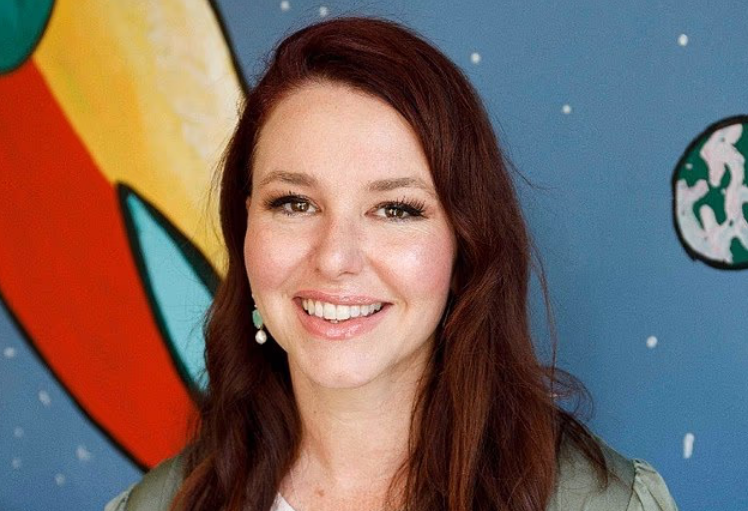
You've probably seen the headlines trumpeting that Baby Boomers have the most savings of any generation. While that's technically true, the full picture reveals a much more complex and concerning reality for many Australian seniors in 2025.
Recent data shows Baby Boomers (58+ years) have the highest average savings at $61,232, significantly higher than younger generations.
But before you feel either smug or discouraged about your own savings position, there's crucial context you need to understand about what these numbers actually mean—and what they don't reveal about the daily financial struggles many seniors are facing.
The reality behind the averages
Personal finance experts warn that savings averages can paint a dangerously misleading picture. More than half (52.2 per cent) of Australians have less than $20,000 in savings, and nearly one in six (16.2 per cent) have less than $1,000—roughly translating to 3.4 million people.
The problem with averages is simple mathematics: a small number of people with very large savings balances can dramatically skew the figures upward. As the original article's expert, Sarah Megginson, pointed out, if three people have $500, $1,000 and $100,000, the average is about $33,833—but clearly that doesn't reflect most people's actual situation.
'Nearly 4 in 5 (79 per cent) are cutting back on everyday expenses, with dining out (60 per cent), social activities (46 per cent), and even essential home comforts like heating and cooling (41 per cent) being the first to go'
This becomes even more stark when you look at the median figures—the middle point where half have more and half have less. Separate Westpac data found customers aged 65 to 74 had $101,004 in their savings account on average, and a median of $15,829. That's a massive difference that reveals just how uneven wealth distribution really is among older Australians.
The cost of living crunch hitting seniors hard
While the savings headlines focus on averages, a more troubling story emerges when you look at how seniors are actually faring in 2025. More than half (55 per cent) of over-50s are finding it increasingly difficult to manage expenses on a pension, and the cutbacks are affecting fundamental aspects of life.
The sacrifices many seniors are making go far beyond skipping the occasional restaurant meal. Nearly 4 in 5 (79 per cent) are cutting back on everyday expenses, with dining out (60 per cent), social activities (46 per cent), and even essential home comforts like heating and cooling (41 per cent) being the first to go.
Perhaps most concerning is that as many as 1 in 5 (20 per cent) are delaying or forgoing necessary medical treatment due to cost.
How your savings stack up—and how long they'd last
Despite the concerning cost of living pressures, many seniors do have more financial resilience than younger generations. 38 per cent of baby boomers would be able to get by for at least a year on their savings, compared to much shorter timeframes for younger Australians.
However, this varies dramatically depending on your savings level and spending needs. Financial advisers typically recommend having three months' worth of income in an emergency fund, as Findex financial adviser Jess Bell explains:
'If you had around three months' worth of income in a savings account or in an offset account, I think that's at least comfortable to provide for emergencies'.
Government Savings Protection
Your savings are protected by the Australian Government's Financial Claims Scheme up to $250,000 per person per authorised deposit-taking institution (ADI). If you have more than $250,000, you can spread it across multiple banks to ensure full protection. This guarantee covers banks, credit unions, and building societies—giving you peace of mind that your nest egg is secure.
Making your money work harder in 2025
With inflation still trending above 3 per cent in early 2025, it's more important than ever to ensure your savings are earning competitive returns. The good news is that current interest rates offer much better opportunities than in recent years.
The account with the highest maximum savings rate currently available is Bankwest's Easy Saver Plus Account, which offers new customers a maximum rate of 5.15 per cent p.a. Other competitive options include accounts from Teachers Mutual Bank and various credit unions offering rates above 4.5 per cent.
However, many of these high-rate accounts come with conditions like monthly deposits or limits on withdrawals. To earn the highest interest rate on a savings account, you may need to deposit a minimum amount each month, have a linked transaction account and make no withdrawals (or ensure the balance grows each month).
Smart saving strategies for your stage of life
The traditional savings advice often doesn't account for the unique circumstances many seniors face. Unlike younger savers who might focus on aggressive growth, seniors typically need to balance accessibility with returns, especially when living on fixed incomes.
Financial planner Benjamin Brett recommends that people save 20 per cent of their income for long-term goals, including paying off home loans, preparing for early retirement, or building wealth. However, he acknowledges this may not be realistic for everyone, particularly those on lower incomes.
For seniors, the focus shifts to different priorities:
- Emergency accessibility: Ensuring you can quickly access funds for unexpected health costs or home repairs
- Inflation protection: Choosing accounts that offer returns above the inflation rate
- Minimal complexity: Avoiding accounts with complicated conditions that might cause you to miss out on bonus interest
Practical saving strategies for seniors
- Shop around for high-interest accounts offering 4-5 per cent+ returns
- Consider splitting savings between a high-interest account and an easily accessible emergency fund
- Review your savings accounts annually as rates change frequently
- Don't be afraid to switch banks if you find better rates elsewhere
- Keep some funds in accounts with no withdrawal restrictions for emergencies
The retirement reality check
When financial experts talk about comfortable retirement, the numbers can be sobering. ASFA estimates that the lump sum needed at retirement to support a comfortable lifestyle is $690,000 for a couple and $595,000 for a single person.
These figures assume you own your home outright and are in relatively good health. For many seniors, especially those who rent, the financial pressure is significantly higher. Age pensioners who rent privately will struggle financially, making even modest additional savings crucial.
The gap between these targets and current savings levels highlights why many seniors are feeling financial stress. However, it's important to remember that these figures assume home ownership and a part-Age Pension, and many retirees don't apply for the Age Pension as soon as they're eligible, losing out on a potential source of income.
Taking control of your financial future
While the statistics can seem daunting, there are practical steps you can take to improve your financial position, regardless of your current savings level. The key is focusing on what you can control rather than worrying about how you compare to others.
Set up automatic transfers to move a portion of any income into your savings account each payday, and consider using multiple accounts or sub-accounts for separate goals—emergencies, holidays, a new car—to stay motivated and organised.
Remember Scott Pape's core advice about living within your means and making strategic cuts. His suggestion to 'cut ruthlessly on the things you won't miss, so you can splurge on the things you love' remains relevant, though it may need adapting for fixed retirement incomes.
Did you know?
Did you know?
Despite having the highest average savings, Baby Boomers actually save the least each month ($538) compared to other generations, which makes sense given many are living on fixed retirement incomes rather than earning regular wages.
The bigger picture for Australian seniors
The savings story for Australian seniors is ultimately one of resilience in the face of genuine challenges. While many have accumulated more wealth than younger generations, they're also dealing with cost of living pressures that are forcing difficult choices between essentials.
Almost one in four Australians who have already retired are still using their pension to pay off debt, with those aged 65-74 carrying an average debt of $100,000, dropping to $20,000 for those above 75.
The key is understanding that your financial situation is unique to your circumstances, needs, and goals. Whether you're ahead of or behind the averages matters far less than ensuring your money is working as effectively as possible for your situation.
What This Means For You
What's your experience with managing savings in retirement? Have you found accounts that work particularly well for your needs, or discovered strategies that have helped stretch your dollars further? Share your insights with fellow members—your practical experience could help someone else navigate these challenging times.
Original Article
https://www.dailymail.co.uk/news/article-14991479/How-savings-you-right-based-age-Australia.html
Average Savings in Australia by Age, Gender & State in 2025
Cited text: Baby Boomers (58+ years) have the highest average savings at $61,232, while Gen Z (18—25 years) has the lowest at $40,185....
Excerpt: Baby Boomers (58+ years) have the highest average savings at $61,232
https://www.money.com.au/banking/high-interest-savings-accounts/savings-statistics
Average Savings in Australia by Age, Gender & State in 2025
Cited text: Baby Boomers (58+ years) have the highest average savings at $61,232, while Gen Z (18—25 years) has the lowest at $40,185.
Excerpt: Baby Boomers (58+ years) have the highest average savings at $61,232
https://www.money.com.au/banking/high-interest-savings-accounts/savings-statistics
How Much Does The Average Australian Save in 2025?
Cited text: More than half (52.2 per cent) reported having less than $20,000, which suggests the median savings balance is a bit under this threshold. Alarmingly, nearly ...
Excerpt: More than half (52.2 per cent) of Australians have less than $20,000 in savings, and nearly one in six (16.2 per cent) have less than $1,000—roughly translating to 3.4 million people
https://www.savings.com.au/savings-accounts/average-savings-australia
Shock as Baby Boomers candidly reveal their savings balances: ‘Millionaires everywhere’
Cited text: Separate Westpac data found customers aged 65 to 74 had $101,004 in their savings account on average, and a median of $15,829.
Excerpt: Separate Westpac data found customers aged 65 to 74 had $101,004 in their savings account on average, and a median of $15,829
https://au.finance.yahoo.com/news/s...lances-millionaires-everywhere-220022598.html
Retirement Standard—ASFA
Cited text: In 2025, he became the Assistant Treasurer and Minister for Financial Services.
Excerpt: More than half (55 per cent) of over-50s are finding it increasingly difficult to manage expenses on a pension
https://www.superannuation.asn.au/consumers/retirement-standard/
Retirement Standard—ASFA
Cited text:
Excerpt: Nearly 4 in 5 (79 per cent) are cutting back on everyday expenses, with dining out (60 per cent), social activities (46 per cent), and even essential home comforts like heating and cooling (41 per cent) being the first to go.
https://www.superannuation.asn.au/consumers/retirement-standard/
Savings account statistics 2024 | Finder
Cited text: Meanwhile, 38 per cent of baby boomers would be able to get by for at least a year.
Excerpt: 38 per cent of baby boomers would be able to get by for at least a year on their savings
https://www.finder.com.au/savings-accounts/savings-account-statistics
The Cost of Living Longer Report 2024 | Australian Seniors
Cited text: Over 1 in 2 (52 per cent) over 50s have felt financial stress impacting our social interactions. Nearly 3 in 5 (59 per cent) admit to struggling to pay for essentials...
Excerpt: three months' worth of income in an emergency fund, as Findex financial adviser Jess Bell explains: 'If you had around three months' worth of income in a savings account or in an offset account, I think that's at least comfortable to…
https://www.seniors.com.au/news-ins...iors-series-cost-of-living-longer-report-2024
Best Savings Accounts Australia 2025: Rates, Features & Tips | Cockatoo
Cited text: With inflation still trending above 3 per cent in early 2025, your money needs to work harder to preserve its purchasing power.
Excerpt: inflation still trending above 3 per cent in early 2025
https://cockatoo.com.au/savings-accounts-australia-2025-guide/
The best high-interest savings accounts | CHOICE
Cited text:
Excerpt: The account with the highest maximum savings rate currently available is Bankwest's Easy Saver Plus Account, which offers new customers a maximum rate of 5.15 per cent p.a.
https://www.choice.com.au/money/banking/savings-options/articles/top-high-interest-savings-accounts
The best high-interest savings accounts | CHOICE
Cited text: For more than 60 years, we've been making a difference for Australian consumers.
Excerpt: To earn the highest interest rate on a savings account you may need to deposit a minimum amount each month, have a linked transaction account and make no withdrawals (or ensure the balance grows each month)
https://www.choice.com.au/money/banking/savings-options/articles/top-high-interest-savings-accounts
Average Savings in Australia by Age, Gender & State in 2025
Cited text: Benjamin Brett, owner and financial planner at Bounce Financial, told Money.com.au that it’s often recommended to save 20 per cent of your income for long-ter...
Excerpt: Financial planner Benjamin Brett recommends that people save 20 per cent of their income for long-term goals, including paying off home loans, preparing for early retirement, or building wealth
https://www.money.com.au/banking/high-interest-savings-accounts/savings-statistics
What is the cost of living in retirement in Australia?
Cited text: It’s worth noting that the ASFA and SCA budgets assume that retirees own their own home outright and are relatively healthy.
Excerpt: ASFA estimates that the lump sum needed at retirement to support a comfortable lifestyle is $690,000 for a couple and $595,000 for a single person
https://www.superguide.com.au/retirement-planning/how-much-cost-live-in-retirement
The cost of living in retirement—GESB
Cited text: We use cookies on our website and in Member Online to gain information that helps us give you a better experience, improve performance and to show you...
Excerpt: Age pensioners who rent privately will struggle financially
https://www.gesb.wa.gov.au/members/retirement/how-retirement-works/cost-of-living-in-retirement
Best High Interest Rate Savings Accounts Australia 2025
Cited text: ... Community First Credit Union Limited (including Community First Bank and Easy Street Financial Services) Credit Union Australia Ltd (trading as Gr...
Excerpt: these figures assume home ownership and a part-Age Pension
https://www.money.com.au/banking/high-interest-savings-accounts
Best High Interest Rate Savings Accounts Australia 2025
Cited text: Is the account provider an ‘authorised deposit-taking institution’?
Excerpt: many retirees don't apply for the Age Pension as soon as they're eligible, losing out on a potential source of income
https://www.money.com.au/banking/high-interest-savings-accounts
Best High Interest Rate Savings Accounts Australia 2025
Cited text: But if it’s a tie-break based on other factors, it’s worth considering whether a linked transaction account is a plus or a minus.This depends on the s...
Excerpt: Almost one in four Australians who have already retired are still using their pension to pay off debt, with those aged 65-74 carrying an average debt of $100,000, dropping to $20,000 for those above 75
https://www.money.com.au/banking/high-interest-savings-accounts







